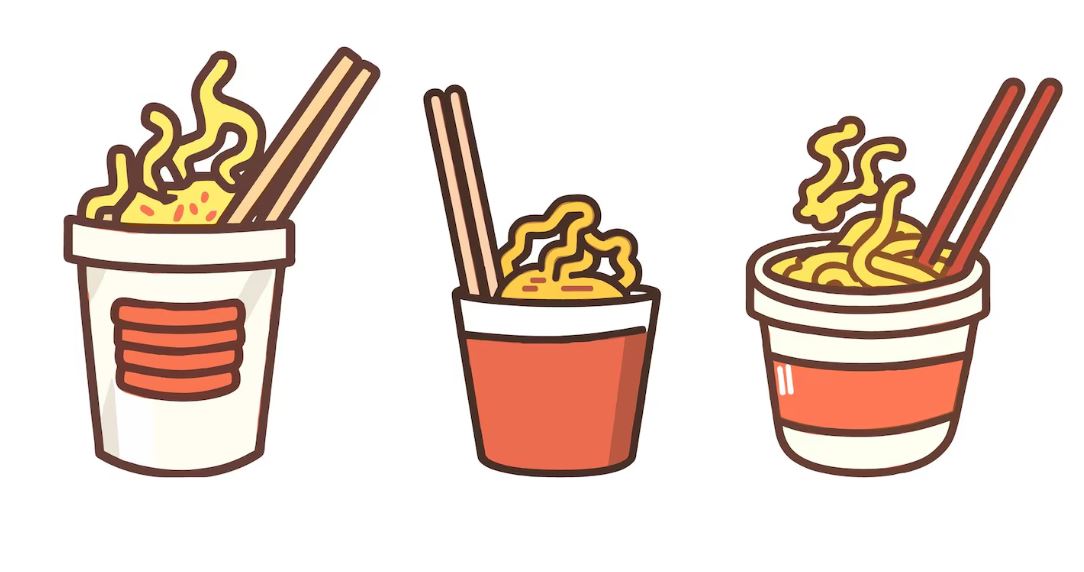
Instant noodles have become popular around the world as they are quick meals, for that reason the demand for instant noodles has increased in recent times. This guide covers the aspects and the details concerning the working of the instant noodle production lines starting from searching raw materials to the cup noodle conveyor technologies. This, therefore, provides the reader with information on the supplie systems, systems, and processes of the industry as well as the important machines forming part of the supply chain of this large industry. In addition to that, the readers will also appreciate how effective and efficient instant noodles are produced today. Such knowledge will provide a broad understanding of the industry and its premise – instant noodles and its production processes.
For more in-depth information you should view from instant noodle production line – Loyal
What does Automatic Instant Noodle Production Line mean?
History and Upgrades of an Instant Noodle Machine.
An instant noodle making machine is primarily composed of multiple units or modules, which are allocated to perform several sub-tasks during the process of making Instant noodles. From the Instant noodle dough mixer which combines flour and water to make dough, the sheeting machine that makes layers of dough to a given thickness, the slitting device that separates these sheets into noodle strands, and lastly the steaming chamber where noodles are warmed to the required temperatures. Aside from these, frying units or air-drying tunnels are utilized according to the type of noodle that is being manufactured, on the other hand, seasoning and packing systems make it sure that every serving is tasty and well packed.
Fried and Non-Fried Instant Noodles: Having A Chat
The first thing worth noting is the method of hydration, since it represents the great difference when the dialectics between fried and non fried instant noodles come into play. Fried noodles are intermediately cooked before they are immersed in the deep fryer that is filled with vegetable oil, which lowers the water content, but more importantly, gives them taste and texture. Such a method then allows the consumer to take food time on preparation to be less than otherwise. On the other hand, non-fried noodles are air-dried or steamed which helps them retain their protein structure but adds oils for being more healthy which in turn takes more time to boil. In order for optimal quality and taste of the end product to be achieved, appropriate settings and equipment changes are required for every specific method.View instant noodle production line – Loyal for More Details
Noodle Equipment That Comes With Aducing Time
Noodles that are produced using high speed instant noodle equipment come out while saving time and preserving the quality of the product in the process. This involves the use of automated control systems that work in perfect sync to control every stage of production so that they can be completed in quick succession without interruptions. Such machines incorporate complex sheeting and cutting mechanisms that result in noodles with the required dimensions and very little left over. Noodle length, thickness or proper alignment have their screws replaced when such conditions arise and the fault of the system is reported at an integrated station for quality control. High, demand environments benefit from this additional feature as control centers can be quickly adjusted and reconfigured on site without losing excessive amounts of time.
View instant noodle production line – Loyal details to get into the details
How to Select An Appropriate Instant Noodles Production Line Vendor?
Scrutinising Supplier Credentials And The Products Manufactured
When considering an instant noodles production line supplier, an examination of their credentials is of utmost importance. They must have certain certifications in the industry for example ISO quality management standards which show that they have put in place practice that has been tried to guarantee quality in manufacturing processes. There are high prospects of a client relying on prior clients’ feedback and case studies which focus on the client side of the supplier’s equipment performance and reliability. The previous point relates to the supplier’s past reputation for innovations, flexibility and sufficient support services; in other words, it means that they will be able to provide not just qualified equipment, but also maintenance and enhancements.
Analyzing Productive Capabilities of Fried and Non-Fried Instant Noodle Machine Options
It is quite obvious that noodle machines that are fried and non-fried should also be compared. For example, fried noodle machines include processing machines that have the capability of frying dough at any set temperature which consequently relates to the texture of the product as well as the drying equipment. However, non-fried machines have steaming and air drying options which place more emphasis on health by minimizing the amount of oil used. Each type of machines has a set of requirements that are designed to meet the diverse requirements of the market and its products. Thus, it becomes essential for the manufacturers to evaluate the various types of noodle machines considering their cost effectiveness, energy usage and maintenance working hours.
Evaluating Automation Levels of Instant Noodle Making Equipment
Automation is the determining factor when considering instant noodle production lines in terms of their efficiency level and size. Automated systems in rooms have the potential to minimize the need for human personnel and thus significantly lower labour costs. Automation is defined more specifically in this paper the ability of the equipment to fuse production steps like mixing, sheeting, cutting and drying with perhaps only a single select button pressed. In particular, the application of smart sensors along with control systems that assist in performing and perfecting the entire process flow.
As technology progresses democratically, It is necessary that suppliers are able to provide systems which are flexible enough to take care of future technology and increase in production in the future.
What Are The Steps Involved In Instant Noodle Manufacturing?
From Dough Mixing To The Steaming Processes And Frying
The first step in the instant noodle production process is dough mixing which includes mixing together of chocolate and various other ingredients. This stage is critical as it significantly affects the wheat flour end product’s texture and quality. Dough once mixed is subjected to a sheeting and cutting process which converts the dough into noodle strands. The noodle strands are then steamed to soften and heat treatment is introduced. The desired purpose of step is realized when the noodles are heated by steaming to make the starch gelatin and gives the spring in the noodles with the firm bite. After the steaming, come the frying and the non-frying steps. During frying, noodles are dunked into hot oil which quickly removes a water content present inside, resulting in crisp noodles. Mounting pasta in non-fried noodles air-drying or roasting methods are used. These pastas are less oily, therefore making it a better choice.
Packaging Solutions: Cup Noodles vs. Stick Noodles
The importance of packaging for instant noodles cannot be stressed enough because it helps maintain its freshness and increases its shelf life. Stick noodles and cup noodles are two major types of instant noodles packaging preferred by different users. It is not only a cup, but also a container that includes all the essential spices and tools. The only thing required in this case is hot water as a prep step and that makes it easy to be used by the consumers. Stick noodle, on the other hand, is a rectangle pouch and requires cutlery such as pots or bowls to cook and serve it. This format is known for its usefulness as it allows users to add any other ingredients to the dish. However, it is crucial to note that both types of packaging for food must fulfill strict food safety regulations and perform under the conditions of storage and transport.
Quality Control Procedures in the Industry Quality control is the core component of the production of instant noodles as every batch has to be up to the taste, texture, and safety requirements. This involves tracing back measures taken from each stage of the Production Line: starting from inspection and testing of raw materials, moisture content and oil absorption tests and ending with the verification of the finished product before packaging and shipment using advanced technologies such as X-ray and metal detectors. Infrared detection technologies and automated vision systems ensure the right proportion and even finish of the noodles, while environmental features like temperature and humidity are appropriately monitored to ensure control parameters are observed. Sophisticated procedures for quality control ensure that the norms are complied with and enhances the faith of the customers in the brand.
What distinguishes an industrial instant noodle production line from a small scale similar production?
Output Capacity Considerations
An industry instant noodles production line can produce thousands of packs of noodles in one production run with numerous output reaches a few thousands per hour to cater for the demand in the market. With the use of automatic machines and continuous title rotation, it has become easier for downtime to be reduced and for productivity to increase. Conversely, small scale operational models have low capacity and production as they mainly serve niche markets or have narrow recorded product lines. Since the industrial line’s production capacity is scalable, suppliers are able to change the pace of production to fit the forecasts of demand making the management of inventories and distribution quite easier.
Production of Noodles Pancakes Type of Customization Options
This changing ownership makes it possible to master industrial instant noodles production lines equipped with advanced equipment allowing for varying types of noodles such as wheat noodles, rice noodles, soba noodles and even gluten free noodles. The change of equipment also ensures a accurate alteration of the recipes such as the different tastes or thickness.. These industrial production facilities suit the broad market trends and different tastes of the man, in the fast changing world. On the other hand, small scale rapid low output production can be seen to focus on the unique shaped, and textured specialty or artisan type of noodles.
Cost Considerations Related to Increasing Output
Increased output entails the need to spend money on physical assets, machinery and expansion hirings. These initial investments are however offset by the scale economies which are low production costs that are incurred as the volume of output rises. However, in larger operations, there will be increased energy, maintenance, and logistic operational cost without forgetting other overheads. In addition, this requires stringent quality control to manage the increased complexity associated with the increase in production output. Regardless of these difficulties, a larger potential revenue and market share translate to an alluring growth strategy for any producers wishing to be a strong even preeminent player in the market.
How Is The Future Of The Instant Noodle Industry Shaping Up?
Technological Innovations in Non-Fried Noodles
Starting from the creation of instant noodles, new technologies have emerged with a goal to suppress the frying process in an effort at creating a healthier alternative. The innovative recommendations made so far include air-drying, steaming, and microwaving noodles to produce non-fried noodles that have a taste, texture and mouth feel similar to fried noodles irrespective of their nutritional benefits. There has been a shift in recent times in the creation of non-fried instant noodles due to the introduction of high-protein flour and fortification with vitamins and minerals. New forms of cutting edge techniques that do not require frying have at the same time been developed to dry the end product, thus, reducing its fat levels.
Eco-Friendly Initiatives in the Instant Noodle Industry
In all encompassing terms, it is a noble aspiration to be able to achieve eco friendly goals during the production of environmentally friendly instant noodle dishes. Moreover, instant noodles have become a great substitute for doing away with noodles while wiping away the use of extra energy resources. Special attention on moving towards eco-friendly production techniques aimed on reducing overproduction and reliance on other energy dependent resources are constantly being improved. Contacting suppliers and manufacturers who utilize non-vegetarian or non-harmful farming practices also helps eliminate the need of adding additional harmful materials.
Integration of Smart Technology in Production Lines
The application of smart technology in instant noodles production lines is transforming the industry by improving its efficiency and accuracy. Real-time communication technologies and IoT devices enable monitoring and controlling of the manufacturing process thus ensuring product quality consistency and minimum downtime. Predictive analytics uses data from the production systems to deliver maintenance forecasts and facilitate automatic adjustments to ensure optimal output. Robots and artificial intelligence also simplify packaging and distribution tasks, helping the production equipment to be flexible enough to meet the dynamic market requirements without compromising quality.
What are the Best Ways to Look After and Get the Most Out of an Instant Noodle Production Line?
Planned Maintenance Program for Noodle Machines
Preventive care of noodle machines is critical to enhance the useful life of the equipment as well as the performance. In the case of noodles machines the annual maintenance schedule should allow for daily, weekly, and monthly maintenance as required. Minimal maintenance for the previous day involves such tasks as cleaning off any component that may have any residue deposits, checking any moving parts for age and wear, and checking for adequate lubrication so that sufficient friction is reduced.
As a part of weekly maintenance, it is important to pay attention to more aggravated parts and, for example, check belts and electrical connections in greater detail in order to prevent major failures and degradation. It may be necessary to adjust some of the machinery and test an array of operations annually in order to ensure that the production parameters set were met. A useful maintenance manual can also save time and effort in future as records of when the last relevant issue arose and how it was solved are systematically kept for trends and projections.
Addressing Issues Related to Production Process
If one analyzes and adopts a production plan, problems should minimize. Most of the released poses issues such as the changes in the cooking of noodles, variation in the dough thick consistency of dough cut into pieces, and closure of machines. The first and foremost step an operator can take regarding This Machine is problem of dough mixing.
This is however not very effective as it can lead to flour being used to water ratio. For instance, obvious guidelines to fix these problems are most importantly, dusting off tools to completely prevent build up or proper alignment of machines to avoid jamming during use. These devices are able to reach full potential without a user altering the inner working of the device so further issues would be problems regarding the time set for cuisson. This would approximately ensure the same results to be consistent.
Importance and Strategies of Increasing Production Capacity
Investing in existing assets already understood in use maximization aids rather than production efficiency as well as an egress of the developed technology capabilities in. Some layered structures like control systems and rotary tools, sensors, IoT devices among others, should be complex in order to enhance precision and energy performance. Introducing Smart sensors to analytics’ automation will enable real-time access to the quantity of the goods produced alongside the already set target for the goods.
However, installation of modular systems increased flexibility in this area of usage. It would hence do businesses well to maintain constant production cycles as well as the ever changing product lines and market requirements. Spending and funding on equipment changes would have to be seen as business decisions but strategies on investments into remaining competitive and consistent production of quality goods in instant noodles.
Write and Win: Participate in Creative writing Contest & International Essay Contest and win fabulous prizes.


